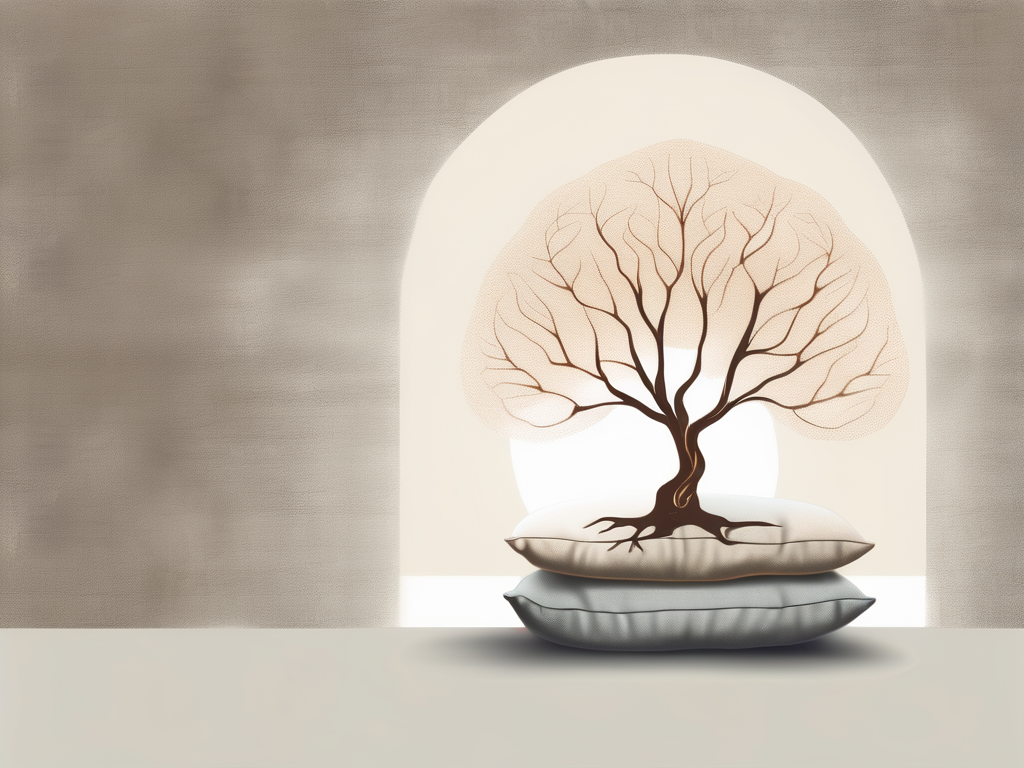Buddha. It’s a name that carries weight and significance in the world of spirituality and peace. But have you ever wondered what Buddha’s real name is? In this article, we will delve into the concept of Buddha, explore the origin of the term, and discover the symbolism behind the name.
Understanding the Concept of Buddha
Before we dive into the details, let’s establish a clear understanding of what Buddha represents. Buddha is not just a person; it’s a state of enlightenment that one can attain through self-realization and awakening. It is the ultimate goal of spiritual seekers who seek liberation from suffering and the cycle of birth and death.
The Origin of the Term ‘Buddha’
The term ‘Buddha’ finds its roots in the ancient Sanskrit language. In Sanskrit, ‘Buddha’ means ‘awakened’ or ‘enlightened.’ It signifies the one who has reached the pinnacle of spiritual awareness and has transcended the limitations of the material world.
The concept of Buddha originated in ancient India, where Siddhartha Gautama, the historical figure who later became known as the Buddha, lived and taught. Siddhartha Gautama was born into a royal family in present-day Nepal around the 5th century BCE. Despite his privileged upbringing, he was deeply troubled by the suffering he witnessed in the world.
Driven by a profound desire to understand the nature of existence and find a way to alleviate human suffering, Siddhartha embarked on a spiritual journey. He renounced his luxurious life and embarked on a path of asceticism, seeking enlightenment through extreme self-denial and meditation.
After years of rigorous practice and self-discipline, Siddhartha realized that extreme asceticism was not the path to enlightenment. He abandoned his ascetic lifestyle and began practicing a middle way, which emphasized balance and moderation.
Underneath a Bodhi tree in Bodh Gaya, India, Siddhartha Gautama entered deep meditation and vowed not to rise until he had attained enlightenment. After a night of intense spiritual struggle, he finally achieved the state of awakening. From that moment on, he became known as the Buddha, the awakened one.
The Symbolism Behind the Name
The name ‘Buddha’ holds profound symbolism. It represents the lotus flower blooming amidst the murky waters. Just as the lotus rises above the mud and blossoms in all its glory, so too does the enlightened one transcend the suffering and challenges of life, radiating wisdom and compassion to the world.
The lotus flower is a powerful symbol in many spiritual traditions, representing purity, enlightenment, and the potential for spiritual growth. It grows in muddy waters, yet remains untainted by its surroundings. Similarly, the Buddha’s teachings emphasize the possibility of liberation and awakening, even in the midst of a world filled with suffering and imperfections.
Furthermore, the lotus flower’s ability to bloom and thrive in adverse conditions symbolizes the potential for transformation and growth within every individual. Just as the lotus emerges from the darkness and transforms into a beautiful flower, so too can individuals cultivate their inner qualities and awaken their true nature.
The symbolism behind the name ‘Buddha’ serves as a reminder that enlightenment is not limited to a select few but is a potential inherent in all beings. It calls upon individuals to embark on their own spiritual journeys, seeking to awaken their innate wisdom and compassion, and ultimately, to attain the state of Buddha.
The Birth and Early Life of Buddha
Now, let’s journey back in time to explore the birth and early life of Buddha.
The story of Buddha begins in the ancient kingdom of Kapilavastu, nestled in the lush landscapes of present-day Nepal. It was here that Siddhartha Gautama, the future Buddha, took his first breath. Born into a royal family, Siddhartha was destined to inherit great power and luxury, surrounded by opulence and comfort.
But destiny had a different plan for him. Despite the abundance that awaited him, young Siddhartha felt an inherent dissatisfaction with the materialistic world. He yearned for something more, something beyond the superficial trappings of wealth and power.
Driven by an insatiable curiosity and a deep longing for truth, Siddhartha embarked on a quest that would forever change the course of his life. He made the courageous decision to renounce his luxurious life, leaving behind his palace and loved ones, in pursuit of spiritual awakening.
With a heavy heart, Siddhartha bid farewell to the comforts of his royal upbringing and set out into the unknown. He ventured into the realm of self-discovery, seeking answers to the profound questions that plagued his restless mind.
As he journeyed through the vast expanse of the world, Siddhartha encountered various spiritual teachers and engaged in rigorous practices of meditation and self-discipline. He delved deep into the realms of philosophy and contemplation, unraveling the mysteries of existence.
Days turned into weeks, weeks into months, and months into years as Siddhartha immersed himself in the pursuit of truth. He endured hardships and faced countless challenges along the way, but his determination remained unwavering.
Through his relentless efforts, Siddhartha gradually began to uncover profound insights into the nature of suffering and the path to liberation. He realized that true happiness and fulfillment could not be found in the transient pleasures of the material world, but in the depths of one’s own consciousness.
And so, the young prince who had once been destined for a life of luxury and power, became the Buddha – the awakened one. His journey from prince to ascetic, from seeker to enlightened being, serves as an inspiration to all who yearn for a deeper understanding of life’s purpose.
The Enlightenment of Buddha
The journey of Siddhartha Gautama culminated in his enlightenment under the Bodhi tree. Let’s uncover the path that led him to this transformative moment.
The Path to Enlightenment
Siddhartha Gautama, born into a royal family in ancient India, was shielded from the harsh realities of life. However, as he grew older, he became increasingly aware of the suffering and impermanence that plagued humanity. This realization ignited a deep longing within him to find answers to the profound questions of human existence.
Driven by an insatiable curiosity, Siddhartha renounced his privileged life and embarked on a spiritual quest. He left behind his luxurious palace and ventured into the wilderness, seeking truth and enlightenment. For years, he wandered through forests, traversed mountains, and engaged in rigorous spiritual practices, determined to unravel the mysteries of life.
During his arduous journey, Siddhartha encountered various spiritual teachers and learned from their wisdom. He studied different philosophies and religious practices, but none of them provided him with the ultimate truth he sought. Undeterred, he continued his relentless pursuit, delving deeper into the realms of meditation and self-discovery.
Finally, after years of unwavering dedication, Siddhartha found himself sitting under the Bodhi tree, a symbol of tranquility and enlightenment. He resolved not to rise until he had achieved the profound awakening he sought.
The Significance of the Bodhi Tree
The Bodhi tree holds immense significance in Buddhism. It was under this sacred tree that Siddhartha Gautama, now known as the Buddha, made a solemn vow to himself. He pledged to remain seated beneath its branches until he had attained enlightenment, breaking free from the cycle of birth and death.
As Siddhartha sat in deep meditation, his mind transcended the limitations of the physical world. He delved into the depths of his consciousness, unraveling the intricate workings of existence. The Bodhi tree, with its sprawling branches and lush foliage, provided a serene and conducive environment for his inner exploration.
Days turned into nights, and nights into days, as Siddhartha remained steadfast in his pursuit of enlightenment. He faced numerous obstacles and temptations, but his determination remained unshaken. The tree, with its roots firmly grounded in the earth and its branches reaching towards the heavens, became a symbol of his unwavering resolve.
Finally, as the first rays of dawn broke through the darkness, Siddhartha Gautama experienced a profound awakening. He achieved enlightenment, gaining deep insights into the nature of suffering, the causes of suffering, and the path to liberation.
Under the Bodhi tree, Siddhartha became the epitome of wisdom, compassion, and inner peace. He had discovered the Four Noble Truths and the Eightfold Path, which would serve as the foundation of Buddhism. From that moment forward, he dedicated his life to sharing his teachings and guiding others towards liberation from suffering.
The Bodhi tree, forever intertwined with the story of the Buddha’s enlightenment, stands as a powerful symbol of spiritual awakening and the potential for transformation that resides within each of us.
Buddha’s Teachings and Philosophy
Buddha’s enlightenment gave birth to a profound philosophy and a set of teachings that continue to guide and inspire countless individuals today. These teachings delve deep into the nature of existence, offering profound insights into the human condition and providing a path towards liberation and enlightenment.
At the core of Buddha’s teachings are the Four Noble Truths, which serve as the foundation for understanding the nature of suffering and the path to liberation. These truths offer a profound understanding of the human condition, revealing that suffering is an inherent part of life and that it arises from attachment and craving.
The Four Noble Truths
The first noble truth acknowledges the existence of suffering. It recognizes that suffering is an inevitable part of life and that no one is exempt from its grasp. It encompasses physical pain, emotional turmoil, and the existential angst that arises from the impermanence of all things.
The second noble truth explores the causes of suffering. It reveals that attachment and craving are the root causes of our dissatisfaction and unhappiness. By clinging to desires and expectations, we create a never-ending cycle of wanting and grasping, which ultimately leads to suffering.
The third noble truth offers hope and liberation. It teaches that there is a way out of suffering, that it is possible to attain true happiness and inner peace. By understanding the causes of suffering and letting go of attachment and craving, one can break free from the cycle of dissatisfaction and find lasting contentment.
The fourth noble truth presents the Eightfold Path as the means to attain liberation. This path encompasses eight interconnected principles that guide individuals towards ethical conduct, mental discipline, and wisdom. It is a practical guide to living a wholesome and purposeful life, leading to the realization of one’s true nature.
The Eightfold Path
The Eightfold Path is a comprehensive framework that encompasses all aspects of human existence. It provides guidance on how to live a balanced and harmonious life, leading to the ultimate goal of liberation and enlightenment.
The first principle of the Eightfold Path is Right View, which involves developing a correct understanding of the nature of reality. It encourages individuals to see things as they truly are, free from delusions and misconceptions.
The second principle is Right Intention, which emphasizes the importance of cultivating wholesome and compassionate intentions. It encourages individuals to let go of harmful thoughts and desires, replacing them with intentions that promote well-being and the welfare of others.
The third principle is Right Speech, which emphasizes the importance of practicing truthful, kind, and non-harmful speech. It encourages individuals to communicate in a way that fosters understanding, harmony, and respect.
The fourth principle is Right Action, which focuses on ethical conduct. It encourages individuals to act in ways that are non-harmful, compassionate, and respectful towards oneself and others.
The fifth principle is Right Livelihood, which emphasizes the importance of engaging in a livelihood that is ethical and aligned with one’s values. It encourages individuals to avoid occupations that cause harm or suffering to others and to choose livelihoods that promote well-being and the greater good.
The sixth principle is Right Effort, which emphasizes the importance of cultivating wholesome qualities and abandoning unwholesome ones. It encourages individuals to exert effort in developing positive qualities such as mindfulness, compassion, and wisdom.
The seventh principle is Right Mindfulness, which involves cultivating a clear and non-judgmental awareness of the present moment. It encourages individuals to be fully present and attentive, observing their thoughts, emotions, and sensations without attachment or aversion.
The eighth and final principle is Right Concentration, which involves developing a focused and concentrated mind through meditation and mental training. It encourages individuals to cultivate deep states of concentration and insight, leading to the direct experience of reality and the ultimate liberation.
By following the Eightfold Path, individuals can cultivate a life of balance, wisdom, and compassion. It provides a roadmap for navigating the complexities of existence, leading to the realization of one’s true nature and the attainment of lasting peace and happiness.
The Legacy of Buddha
Even after his physical departure, the legacy of Buddha continues to shine brightly in the world.
The Spread of Buddhism
Buddhism, the profound philosophy bestowed by Buddha, spread far and wide across various regions and cultures throughout history. It shaped the lives of millions and continues to be a source of inspiration and guidance to seekers on their spiritual journey. From majestic temples to humble meditation halls, the impact of Buddha’s teachings can be seen in numerous ways.
Buddha’s Influence in Modern Times
Even in our modern and fast-paced world, Buddha’s influence remains relevant and powerful. His teachings on mindfulness, compassion, and self-discovery provide a refuge for individuals seeking solace and an anchor amidst the chaos of everyday life.
In conclusion, Buddha’s real name may be Siddhartha Gautama, but his title ‘Buddha’ represents so much more. It signifies the epitome of spiritual enlightenment and serves as an eternal reminder of the potential that lies within each of us to awaken and find true peace. May his teachings continue to illuminate our hearts and guide us towards a more mindful and compassionate existence.












